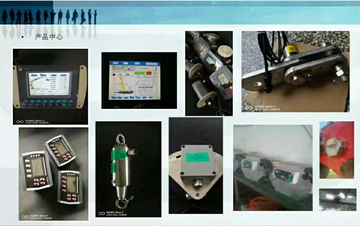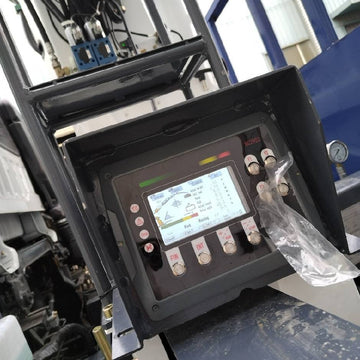
Analysis of the hydraulic working principle of truck crane
As an indispensable and important equipment in modern logistics, construction and other fields, the efficient and convenient operation performance of truck cranes is largely due to its core component-hydraulic system. The hydraulic system converts the mechanical energy generated by the power machine (such as the engine) into hydraulic energy through the principle of liquid transmission, and then transmits it to the actuator (such as hydraulic cylinder, hydraulic motor) through the pipeline, so as to achieve the smooth and precise movement of the various parts of the crane. The following will conduct an in-depth analysis of the composition, working principle and application of the hydraulic system in truck cranes.
1. Basic composition of hydraulic system
The hydraulic system of a truck crane is mainly composed of five parts: power element, actuator, control element, auxiliary element and hydraulic oil. The power element is usually a hydraulic pump, which is responsible for converting mechanical energy into hydraulic energy; the actuator includes a hydraulic cylinder and a hydraulic motor, which is responsible for converting hydraulic energy into mechanical energy and driving the various parts of the crane; the control element mainly includes various valves, which are used to control the flow, pressure and direction of the hydraulic oil; the auxiliary elements include oil tanks, oil filters, coolers, etc. to ensure the normal operation of the system; hydraulic oil is the medium for transmitting energy.
2. Working principle of hydraulic system
The working principle of hydraulic system is based on Pascal's law, that is, in a closed container, the pressure applied to the static liquid can be transmitted to all parts of the liquid with equal value and without loss. When the hydraulic pump rotates under the drive of the power machine, the hydraulic oil in the oil tank is sucked in and pressurized and sent into the pipeline, and distributed to each actuator through the control valve. The actuator generates thrust or torque under the action of hydraulic oil, driving the telescopic arm, luffing mechanism, slewing mechanism, etc. of the crane to complete the corresponding action. After completing the task, the hydraulic oil returns to the tank, and enters the circulation again after filtering and cooling.
3. Application of hydraulic system in truck crane
Telescopic arm drive: The telescopic arm of the truck crane is usually driven by multiple hydraulic cylinders in series or parallel. The change of arm length is achieved by controlling the extension and contraction of the hydraulic cylinder to meet the needs of different operating ranges.
Luffing mechanism: The luffing mechanism is responsible for adjusting the elevation angle of the crane arm to change the vertical height of the lifting object. This action is also driven by the hydraulic cylinder, and the flow and pressure of the hydraulic oil are precisely controlled to achieve smooth and stepless luffing.
Slewing mechanism: The slewing mechanism enables the boom to rotate in the horizontal plane and expand the operating range. The hydraulic motor, as the power source of the slewing mechanism, controls the flow direction and flow of hydraulic oil to achieve the forward and reverse rotation and speed of the boom.
Hoisting mechanism: The hoisting mechanism is used to lift and lower heavy objects. The hydraulic motor drives the drum to rotate, and the wire rope drives the pulley block to achieve the lifting and lowering of heavy objects. By controlling the pressure and flow of hydraulic oil, the lifting speed and braking torque can be accurately adjusted.
4. Advantages and challenges of hydraulic systems
The application of hydraulic systems in truck cranes brings many advantages, such as high transmission efficiency, precise control, and flexible layout. However, hydraulic systems also face challenges such as leakage, contamination, and difficulty in fault diagnosis. Therefore, when designing and maintaining hydraulic systems, factors such as sealing, cleanliness, and reliability need to be fully considered to ensure the safe and stable operation of the crane.
Conclusion:
The hydraulic system of a truck crane is a complex and sophisticated energy transmission and control network. Its efficient and reliable working performance is directly related to the overall operating efficiency and safety of the crane. By deeply understanding the working principle of the hydraulic system and its application in truck cranes, we can better guide the design and use of equipment and continuously improve the performance and operation safety of cranes. In the future, with the continuous advancement of hydraulic technology and the development of intelligent control technology, the hydraulic system of truck cranes will be more efficient, environmentally friendly and intelligent, providing stronger support for modern logistics and construction operations.
Теги:
Статьи по теме



